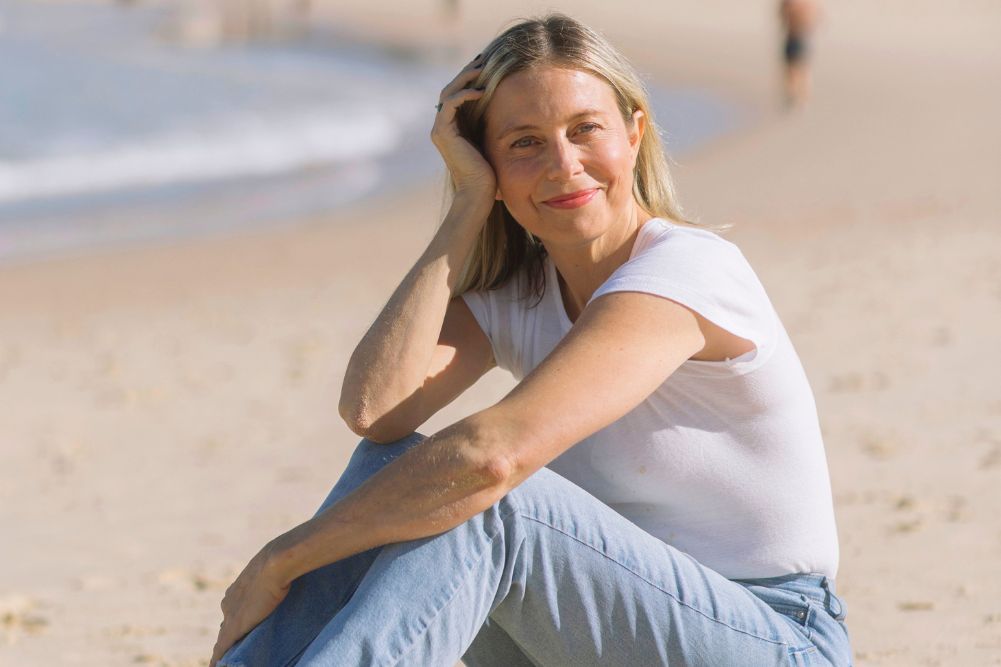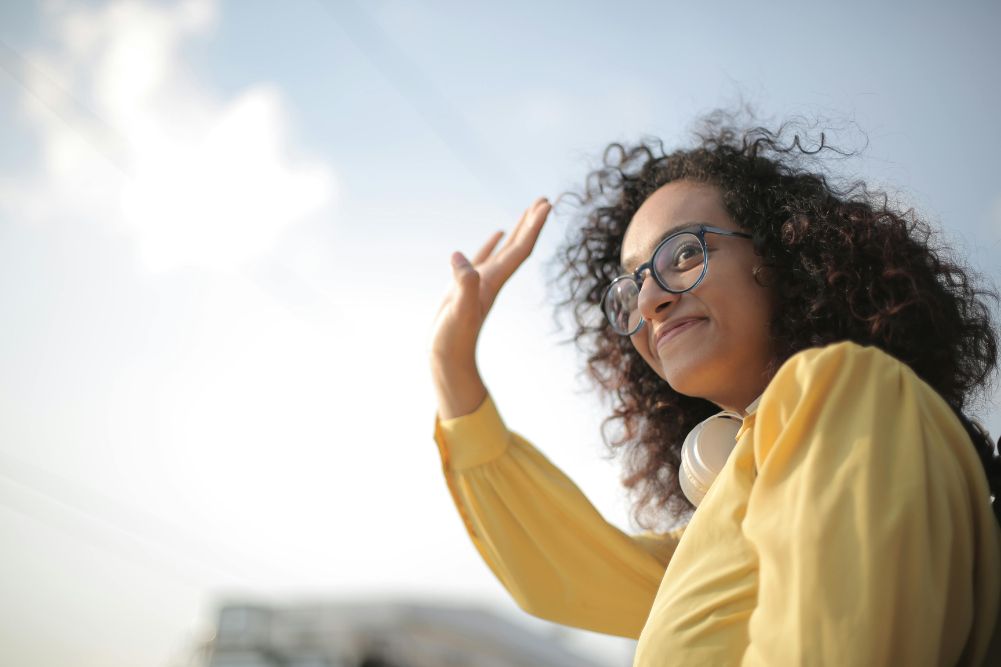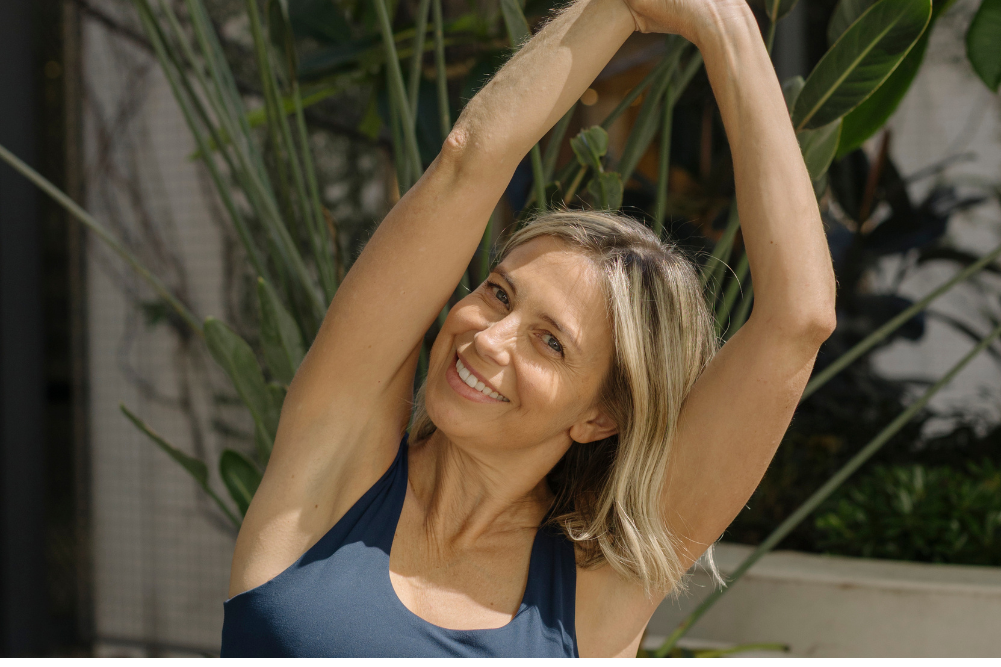Yoga to boost your imagination
As we pivot for a better future, the capacity to imagine that future is more crucial than ever. Take a yogic look at what imagination is and how to unlock it using a series of accessible asanas.
“The true sign of intelligence is not knowledge but imagination.” ~ Albert Einstein
The power of imagination has been acknowledged for centuries by yogis, artists and philosophers. In recent times, however, the world of psychology, corporate, and science and modern physics have all jumped on board. They agree — the mind is the most powerful tool we have as humans, and our ability to imagine things dictates our capacity to create.
Many iconic changemakers have prioritised imagination over all else, Steve Jobs, Walt Disney, Bill Gates, Albert Einstein, Nelson Mandela, Martin Luther “I have a dream” King to name a few. Before anything is manifested, it must first be imagined. And so a multi-million-dollar industry emerged, selling us what we are all desperate to know — how to manifest our dreams. We have the power, they tell us to dream big and live that dream, just like Dorothy and her red sparkly shoes. Fortunately, the yoga philosophy and practices contain all the wisdom we need to foster our imagination. And we can practise them every moment of every day.
Pratyhara and not-knowing
Imagination, according to the Mirriam-Webster dictionary, is “the act or power of forming a mental image of something not present to the senses or never before wholly perceived in reality.”
We live in a world where “seeing is believing”, where we rely on our senses every moment of every day to determine an experience. If I can see, feel, touch, hear, smell, taste it then it must be true.
Patanjali tells us in the Yoga Sutra that none of those things are true. The world we perceive through the senses is not real: it is all projection. As Anaïs Nin says, “We don’t see things as they are, we see them as we are.”
Because we are so caught up in believing everything the senses tell us, we mistake them for reality. We like to “know”, us humans. Knowing makes us feel safe in the world.
The goal of practice is to get beyond your sensory experience so you have space to imagine things that haven’t been experienced by the senses yet
It’s why we wonder what’s happening on our phones when they are face down on the table, as we have coffee with our friends. Who’s texted? Have I got mail? I need to know! But the need to know gets in the way of us being completely present. All our energy and prana is directed at wanting to grasp on to some solid ground. And so the limitless possibilities of the currently unknown are inaccessible. The things our senses haven’t even perceived yet don’t get a chance to come to realisation. The doorway to imagination is closed.
The goal of practice is to get beyond your sensory experience, so you have space to imagine things that haven’t been experienced by the senses yet. That means being OK with not-knowing. We can practise that with simple things like our phones. Try going for a walk and leaving it at home. Don’t listen to a podcast or music. Instead — daydream. Watch what arises in the space that used to be filled madly checking news, social media, WhatsApp and emails.
Quite simply, it means pulling back on the senses. Instead of constantly moving outwards, spend more time inwards. Get on the mat and close off the external world so you can direct your attention to the internal. Taking a drishti or focused gaze allows you to direct your gaze and concentrate on one point, instead of the eyes constantly seeking sensory stimulation. Eventually, you’ll spend more time gazing inwards.
Nada yoga invites us to sit and listen to external sounds, seeing how quickly we make meaning of them, rather than letting them be what they are: sound vibrations in space. By controlling breath in and out through the nostrils, we stop using the nose as a vehicle for smell, and the mouth as a place of taste and speech; rather they become pathways for prana or life force. Our touch becomes a practice of feeling whatever is connecting with the earth — feet, hands, seat, shins, etc — instead of touching to “know” more about whatever we are touching. As we bring the senses under our control, we are free to perceive things internally more readily, and are open to seeing that which we don’t already “know”. We are available for the miraculous experience of the unknown and unseen which lives in our imagination.
Letting go
In order to form new ideas, we have to let go of old ones. The exhale breath represents our capacity to let go. If we find the exhale more challenging, we may see that mirrored in our ability to let go of things off the mat, too. Work at maintaining an equal ratio breath throughout the practice, or even focusing on an extending exhale, to foster the ability to let go.
When we hanker after poses the body is not ready for, it’s also an opportunity to let go of expectation and ego, instead, allowing whatever is, to be. The more you can let go of how you perceive your asana or meditation practice “should” look, the more present you can be whatever experience arises.
The more we learn to let go physically at a cellular level, the more we empty ourselves of old habits and beliefs. So, there is space for the new.
Being in the action itself
“He who can see inaction
In the midst of action, and action
In the midst of inaction, is wise
And can act in the spirit of yoga.” ~ Bhagavadgita 5:18
In the Bhagavadgita, Krishna speaks a lot about taking action. In this sloka, he reminds us sometimes there is inaction in action. We may think we are acting. I frequently feel like my life is filled with unconscious “activity”, I’m just shadow-boxing my time away. And no matter how busy I am, no matter how full my life is, I end up feeling drained and exhausted and like nothing has changed. There’s no room for imagination, let alone creating something new.
Conversely, there are times I may feel like I’m not taking any real action at all. But even within that, is conscious action. My withdrawal, or fear of the unknown, may be a passive-aggressive response to feeling overwhelmed or paralysed. I may go into my cave not wanting to deal with whatever I should be addressing. This too is making a choice, action, dressed up as inaction.
Just like Arjuna’s arrow pulling in, it’s a good idea to check in and make sure your actions and inactions are conscious. Inaction can be very powerful and productive when it’s conscious. To take time in stillness allows space for imagination.
Alternatively, if we feel stuck creatively, just doing something may get the ball rolling, give us momentum, and wake us up. When we have connected to our internal world, the imagination may become very vivid and lead the way. We get out of our own way and action is directed powerfully like Arjuna’s arrow pulling in and being propelled by the power of universal source. When you see a prima ballerina or a concert pianist, there is movement — yes, skilful, whole-hearted, very present creative movement. It often looks like a force greater than them moving through them. Many great artists speak of this feeling. In these moments there’s no room for anything except the action itself, and so one disappears in the experience. This is often described as a state of flow. The flow state gives us access to being truly immersed in action, which is why vinyasa yoga is so powerful. It helps put the body and breath into a state of flow so we can experience this state at the physical and energetic level.
Be imperfect, unique you
“It is better to strive in one’s own dharma than to
Succeed in the dharma of another. Nothing is ever
Lost in following one’s own dharma, but competition
In another’s dharma breeds fear and insecurity.” ~ Bhagavadgita 3:36, translation by Eknath Easwaran
In the Bhagavadgita, dharma is considered purpose or duty. In this context, if you are a painter, it is better to trust your own, unique imagination, and paint from that place — even if it’s not perfect, even if you make mistakes — than to try to imitate the ideas and work of others well. Imperfection is fundamental in allowing the imagination to thrive and manifest. We have to do it our way and take risks. And in risk there will be errors. That’s part of the deal of creation.
Picasso didn’t become Picasso by trying to be perfect, or copying Van Gogh. Perfectionism will kill whatever glorious creativity and inspiration you have. Comparing yourself to others will cripple your ability to connect to and trust the power of your incredible minds.
Not attaching to results
“The superior man is he
Whose mind can control his senses:
With no attachment to results,
He engages in the yoga of action.” ~ Bhagavadgita 3:7
Throughout the Bhagavadgita, Krishna tells us one of the most important practices is non-attachment to results. In the same way, Patanjali tells us in YS 1:12: do your practice with discipline, work really hard and have no attachment to the outcome.
Perfectionism will kill whatever glorious creativity and inspiration you have. Comparing yourself to others will cripple your ability to connect to and trust the power of your incredible minds.
And so we pull the senses inwards; we connect to the inner world, and the imagination lights up. Through this process maybe we have an idea, like a little seed being planted. Just like an apple tree, we work hard, feeding the seed, the sun, rain and soil help our creative process. A little seedling sprouts and starts to grow. And eventually, after much time, branches and leaves finally bear fruit in the form of apples. But the apples are not for us. Our job as the tree is not to attach to the apples! It is to allow creation to spring forth through us, from the imaginative seeds we plant, with no attachment to whether we succeed or not. And then let those apples go!
Picasso didn’t set out to become an award-winning painter. Albert Einstein didn’t set out to be the most acclaimed scientist of all time. Had they both been attaching to results instead of immersing themselves in creativity and curiosity, I wonder if they would have achieved all they did.
We all have a little Picasso and Einstein inside of us. We may not paint or discover the theory of relativity, but we all have the capacity to connect to our immeasurably powerful imagination and bring our dreams to life. And yoga is the gateway to beginning that miraculous process.
Surya namaskar A
By practising surya namaskar A, we can bring together the skills to deepen our capacity to imagine. Through pratyhara — taking a drishti or closing the eyes completely, using equal-ration ujjayi breath (like fogging up with the mouth closed), moving through the transitions (one breath, one asana), we experience a state of flow which brings us into presence. Here is a classical surya A breakdown.
Inhale and reach the arms out to the side and up. Shoulder blades descend down the back, outer arms hug in, broaden collar bones.
Exhale and fold forward, palms land on shins or blocks. Either knees bent extend the legs, lifting quads and kneecaps up.
Inhale half-way lift, lift the chest, extending the spine.
Exhale and step back to plank.
Inhale and make sure shoulders are above wrists, heels above balls of feet. Shorten the distance between bottom ribs and frontal hip bones.
Exhale, knees down or legs extended as you lift naval to spine and lower to the earth, elbows above wrists.
Inhale to lift tips of shoulders up and move the centre of the chest forward and backs of feet press down. Lengthening spine.
Exhale and tuck toes, either press back through all fours or plant to downward facing dog. In downward dog, ground the palms, shoulder width apart, hips climb higher, ribs quiet, quads lift up and heels descend.








